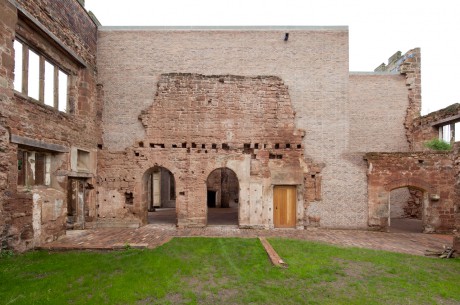Witherford Watson Mann Architects
12 April 2016 5:00 pm at SAUL Studio
Speaker: William Mann introduced by Jan Frohburg
Can you save the remnants of a historic castle by building a new house inside it? William Mann will present architectural interventions at Astley Castle, covering its many design challenges. Astley is a remote site with rich historic resonance: a moated castle, lake, church and the ghost of pleasure gardens are grouped around a shallow ridge. With its restoration now complete, you look out from twelfth and twenty-first century construction to fifteenth and seventeenth century walls – the dialogue across the centuries frames contemporary conversations. On a somewhat similar theme but bigger scale William Mann will also talk about the tendency to demolish and build new in the city – and how the frequent regeneration ambition to erase the past is fundamentally flawed.
William Mann is partner of Witherford Watson Mann Architects in London. He studied architecture at the University of Cambridge and Harvard University, completing his diploma in 1991. He has worked with a number of internationally recognised practices including Belgian architects Robbrecht en Daem before establishing WWM in 2001. Also a curator, editor and author, William is currently a Guest Practitioner at the London School of Economics Cities Programme. Ever since they first collaborated in 1997, Witherford Watson Mann Architects were hungry to observe the ways that changing interests shape our streets and landscapes, and to see how coalitions of individuals could make space for collective values. In 2013, Witherford Watson Mann Architects were awarded the RIBA Stirling Prize for their work at Astley Castle. – “WWM are an Observer Corps, wonderful hoverers, observers, listeners, interpreters, mind changers. They mull and incubate space, time, value, patterning and culture…”
“Futures of the Past” looks at buildings of the past and how we think about their future. Aware of the necessarily creative and destructive role of architecture we hold a deep interest in what exists. This series of talks is a public forum intended to address a range of questions on architecture’s role, past and present. The current suite of lectures focuses on architects in the role of curators of historic buildings as well as the technologies of preservation.

